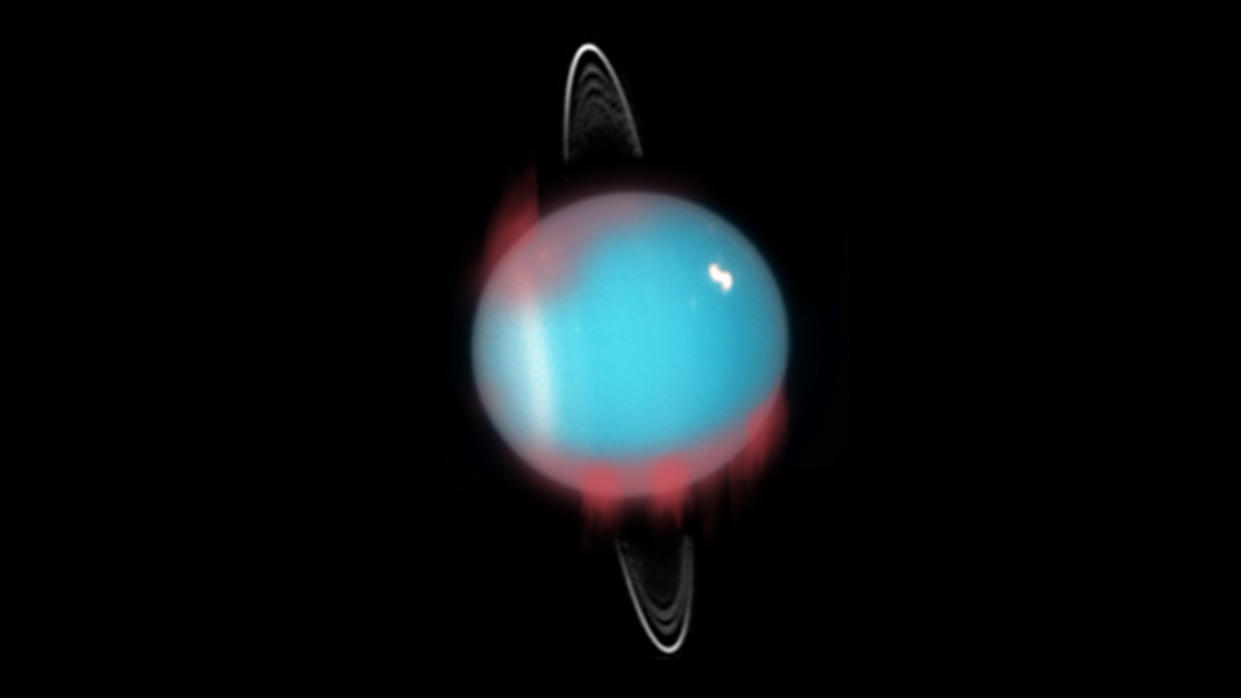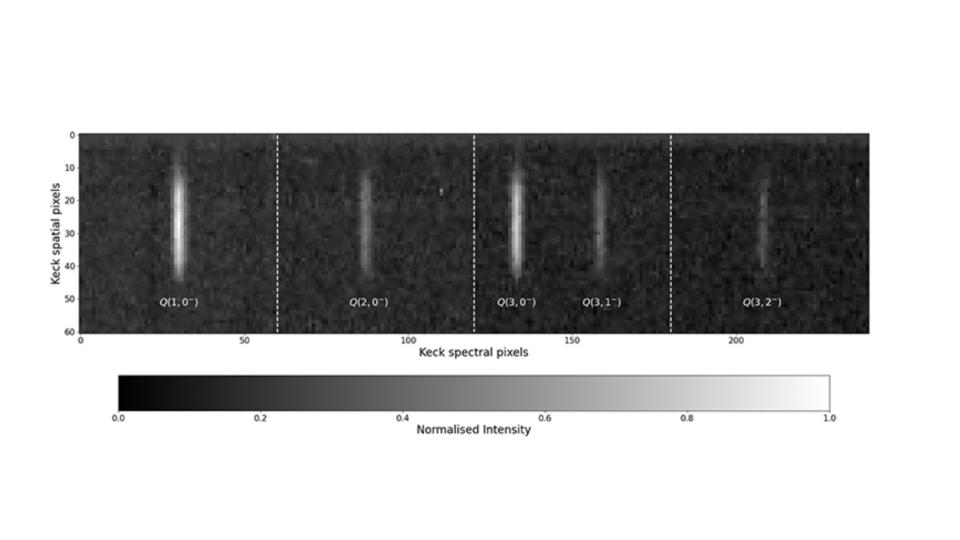Infrared aurora on Uranus confirmed for the 1st time

Astronomers using archived data from the giant Keck II telescope on Mauna Kea in Hawaii have successfully glimpsed Uranus' infrared aurora for the first time.
Like auroras on Earth, those on Uranus are caused when charged particles riding the solar wind interact with the planet's magnetic field and are funneled along magnetic field lines toward the magnetic poles. As they enter Uranus' atmosphere, the charged particles collide with atmospheric molecules, causing those molecules to glow.
On Earth, the auroral light comes from collisions with oxygen and nitrogen atoms, with the colors mostly red, green and blue. On Uranus, however, the dominant atmospheric gases are hydrogen and helium at much lower temperatures than on Earth. These result in Uranus' auroral glow being predominantly at ultraviolet and infrared wavelengths.
Related: Northern lights (aurora borealis): What they are & how to see them
The ultraviolet aurora on Uranus was first seen in 1986 by NASA's Voyager 2 probe, which flew past the planet that year. It's taken nearly 40 years to detect its infrared counterpart.
Using data from the Keck II Near-Infrared Spectrometer (NIRSPEC) taken all the way back in 2006, astronomers led by graduate student Emma Thomas of the University of Leicester in England identified emission lines from the H3+ molecule. H3+ is a trihydrogen cation that contains three protons and only two electrons, meaning it is positively charged.
The Uranus emission was the result of molecular hydrogen being ionized and forming H3+ cations following collisions with charged particles, with the emission creating an infrared auroral glow over the northern magnetic pole. In essence, Thomas' team saw Uranus' northern lights.

RELATED STORIES:
— Uranus: Everything you need to know about the coldest planet in the solar system
— Where to see the northern lights: 2023 aurora borealis guide
— Photos of Uranus, the tilted giant planet
"The temperature of all the gas giant planets, including Uranus, are hundreds of degrees Kelvin/Celsius above what models predict if only warmed by the sun, leaving us with the big question of how these planets are so much hotter than expected," said Thomas in a statement. "One theory suggests the energetic aurora is the cause of this, which generates and pushes heat from the aurora down towards the magnetic equator."
Another mystery that the aurorae could help solve is why Uranus' (and Neptune's) magnetic fields are misaligned with their rotational axes by such a large amount — on Uranus the misalignment is 59 degrees. Because auroras trace out the magnetic field structure of a planet, which is coupled to the upper layers (the ionosphere and thermosphere) of the atmosphere, further study could reveal hidden clues as to the origin of this misalignment.
The findings were published on Oct. 23 in the journal Nature Astronomy.

